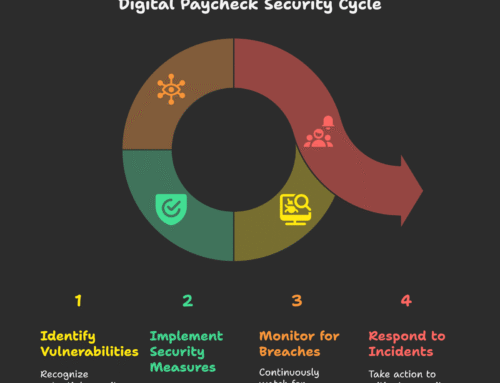Payroll problems can be a thorn in the side of any business, so it’s important to have a plan of action in place to either avoid them entirely, or remedy them as and when they arise.
Of course if you don’t know what can go wrong, you won’t be equipped to fix uncommon complications in this context, so here are some examples of irregularities and unfortunate circumstances to have on your radar.
Photo by Tima Miroshnichenko
Examining if Your System is Automating Tasks Accurately and Effectively
It’s important to check that any automated processes, from collecting employee data to calculating deductions, are running smoothly. If there are any issues, they can cause serious snarl-ups in payments, or even incorrect calculations.
Make sure you understand how your system works, and don’t just trust it blindly. You should also be aware of which tasks need updating regularly as well as when certain processes will require manual intervention. Knowing this information helps ensure accuracy and prevents errors from slipping through the cracks.
Also, don’t forget about compliance. Check that the relevant regulations are followed at all times so that no one gets fined for violating them.
Handling Incorrect Deductions from Employees’ Salaries
Incorrect deductions can be a huge headache for employers and employees alike. To ensure that everyone is paid correctly, you need to double-check every deduction taken out of an employee’s salary before it is processed. This means ensuring the correct tax rate has been applied, any benefits are up-to-date, and all other calculations are accurate.
If errors do occur, which unfortunately happens sometimes, you should make sure they’re rectified quickly and efficiently so as not to cause further upset or confusion with your team members.
Review payroll data regularly in order to catch any mistakes early on, as this will save time down the line if there ever needs to be corrections made. Additionally, inform employees about their rights when it comes to incorrect deductions so they know what steps can be taken if needed.
Double-Check the Basics First, e.g. That an Employee Understands Gross Pay vs Net Pay
When troubleshooting payroll problems it’s important to start with the basics first; this means making sure that each employee understands their gross pay vs net pay, as well as what is being deducted from both amounts. This can help avoid confusion when trying to answer any questions concerning payment discrepancies or missed payments, and so forth.
It’s also essential you review your employees’ income tax forms so that no errors are made in calculations regarding federal taxes, state taxes or local taxes. These are all incredibly important for accurate payroll processing.
Besides this basic level of understanding, there should be regular training sessions for everyone involved in the payroll process in order to maintain a high standard of accuracy and efficiency within your system.
Making Sure Employees are Paid on Time Despite Bank Issues or Delays
Unfortunately, bank issues and other delays can sometimes get in the way of making sure everyone is paid correctly. So what should you do if this happens?
The first step would be to identify where exactly the problem lies. Is it with a third-party provider’s system, or was there a mistake made within your own payroll department?
Once that’s established, then you can take steps to rectify things by contacting banking partners for assistance if necessary, reviewing all payments before processing them, and having backup plans ready in case similar problems arise again in future.
Doing all of these things will help ensure that no employees miss out on their wages due to glitches from external sources, or internal errors.
Dealing with Currency Differences and Exchange Rates for Overseas Employees
A report from MckInsey & Company found that 58% of people now work from home at least weekly, which is significant not only from an operational perspective, but also in terms of payroll.
Crucially this means that the rise of remote work is encouraging companies to look further afield when recruiting team members, with a global workforce now easier to access for companies that were previously limited by geography.
Where this can get complex is when dealing with the need to pay salaries or fulfill invoices in foreign currencies.
It’s a case of having to factor in differences in exchange rates, and also encompassing other costs that come with sending cash to overseas bank accounts, since charges and fees are all but inevitable when using tried and tested means of transfer.
Once again, it comes down to ensuring that your system is up to the task of taking on the duties of serving a global workforce, part of which must focus on currency discrepancies and other administrative obstacles.
Ideally you’ll have the means to automate much of this, so long as you’ve got the right tools for the job. It’s also worth recognizing that the salaries you offer to remote team members in other regions will need to reflect differences in the cost of living, while also unburdening them from any costs you incur as part of this process so that they aren’t put at a disadvantage compared to their locally employed colleagues.
Bear in mind that just 49% of people are happy with their current job, and that as you look higher up the salary scale, satisfaction increases. It’s a simple yet potent illustration of how having a well paid position leads to a more content team, while in turn any disruption can quickly derail this harmony, and hurt your business as a result.
Final Thoughts
Ironing out payroll problems is an ongoing process, and it’s only achievable if you are proactive in addressing inconsistencies, and also prepared to encompass hold-ups that are outside of your direct control. That way team members can get paid on time, and your workload will be lessened.
It’s also worth noting that no business operates in a vacuum, and so you can benefit from looking into how payroll is overseen and managed in other organizations, whether partners or rivals. If you’re still unsure where you’re going wrong, speak to your employees directly. They could have suggestions on what needs fixing that you haven’t thought of.







Leave A Comment